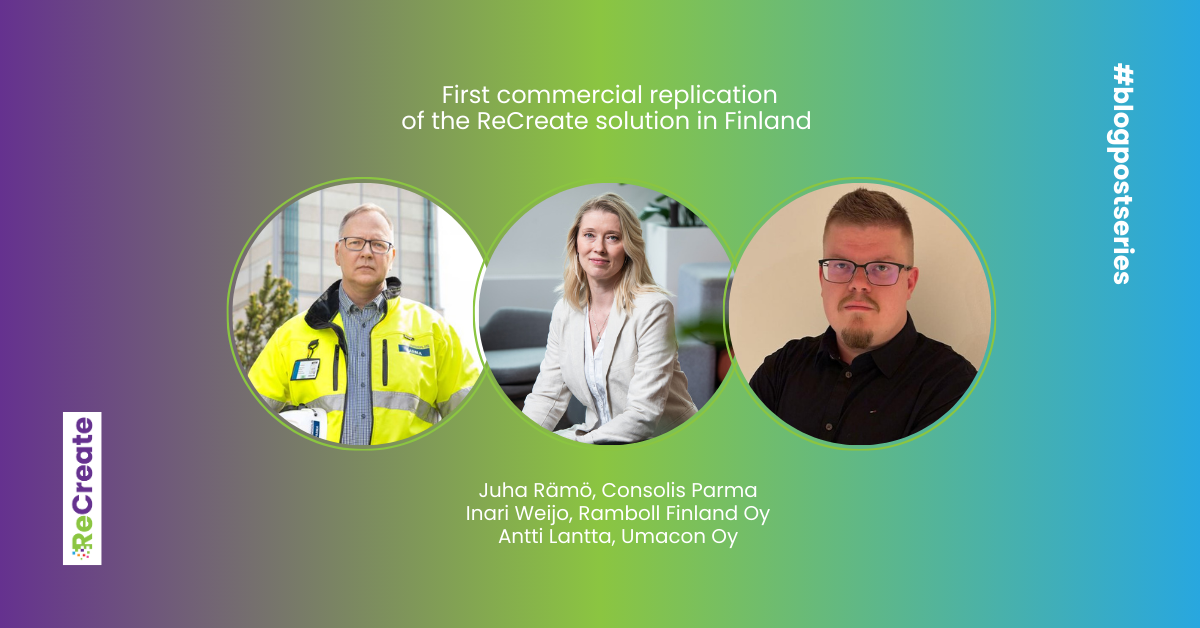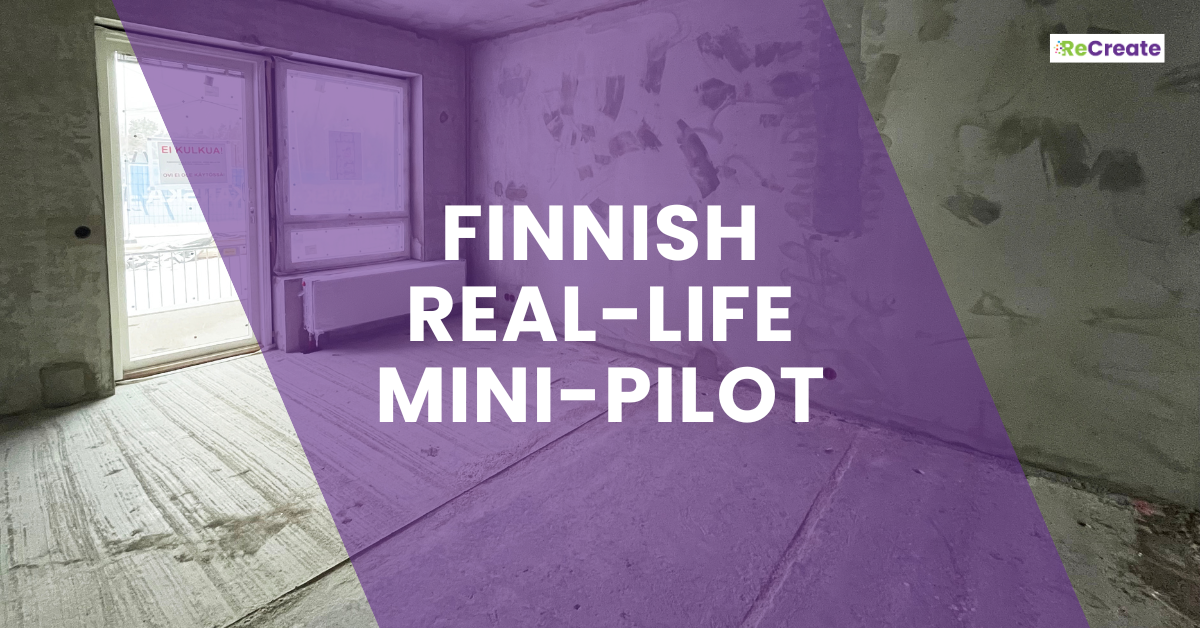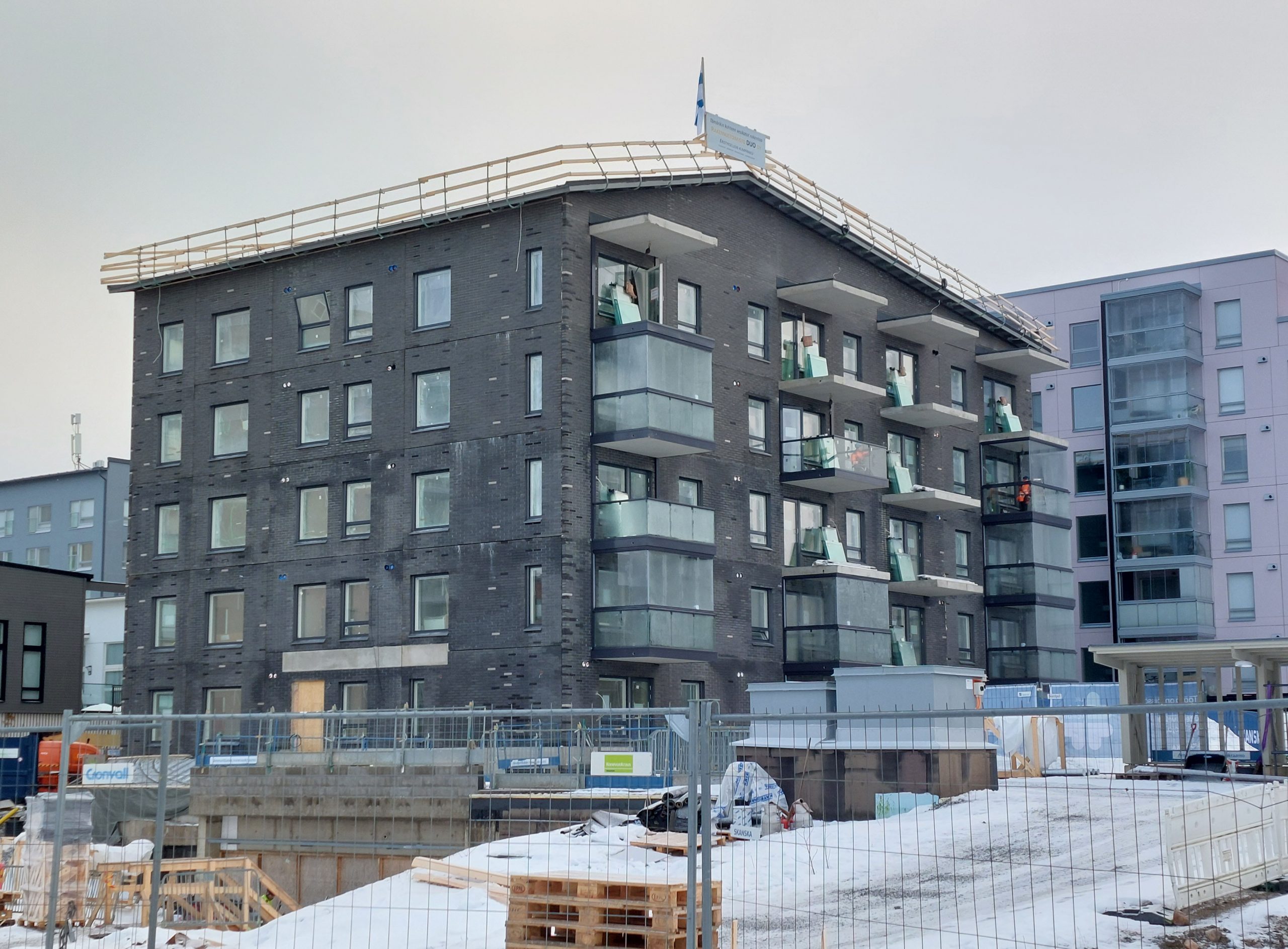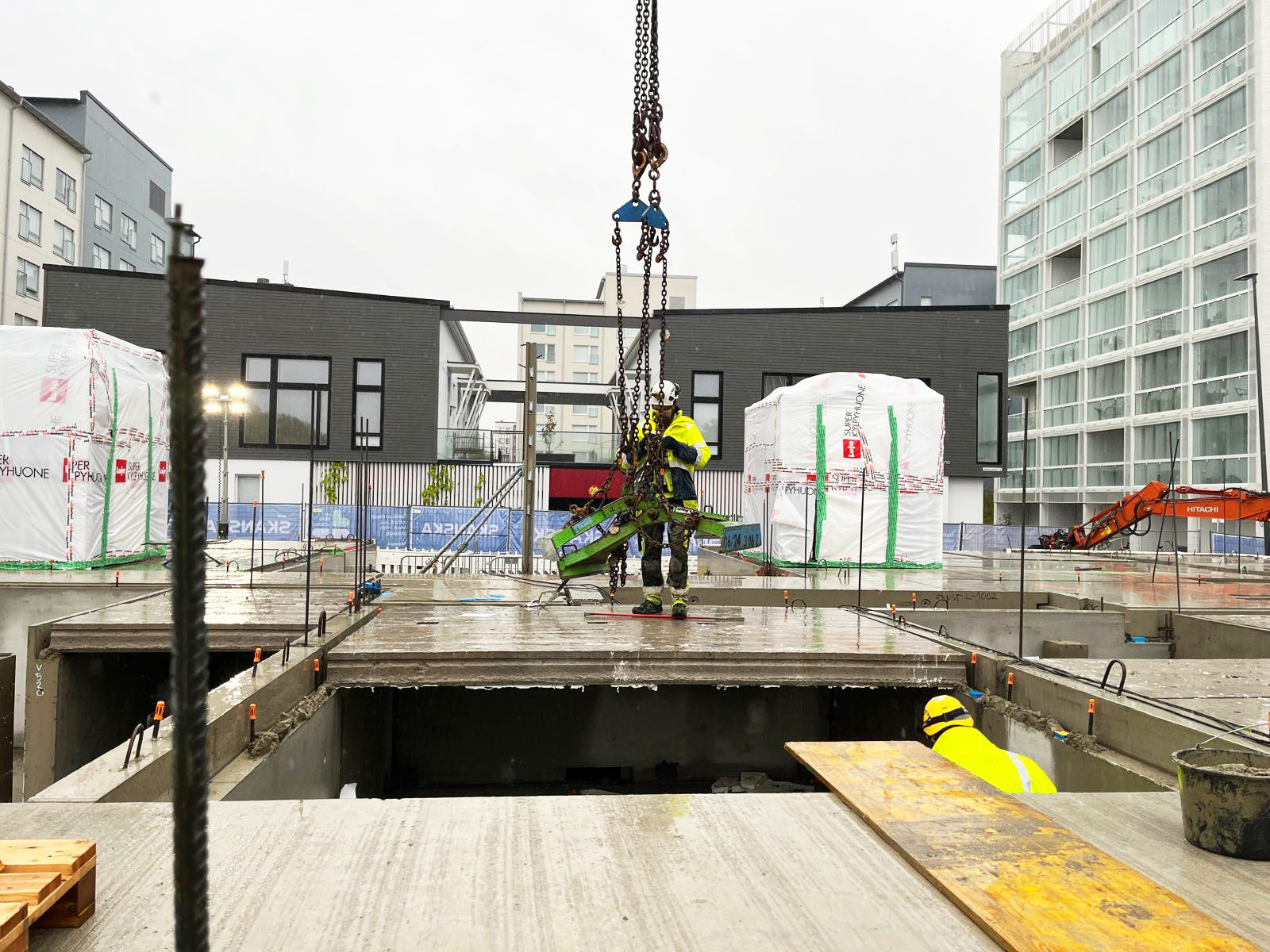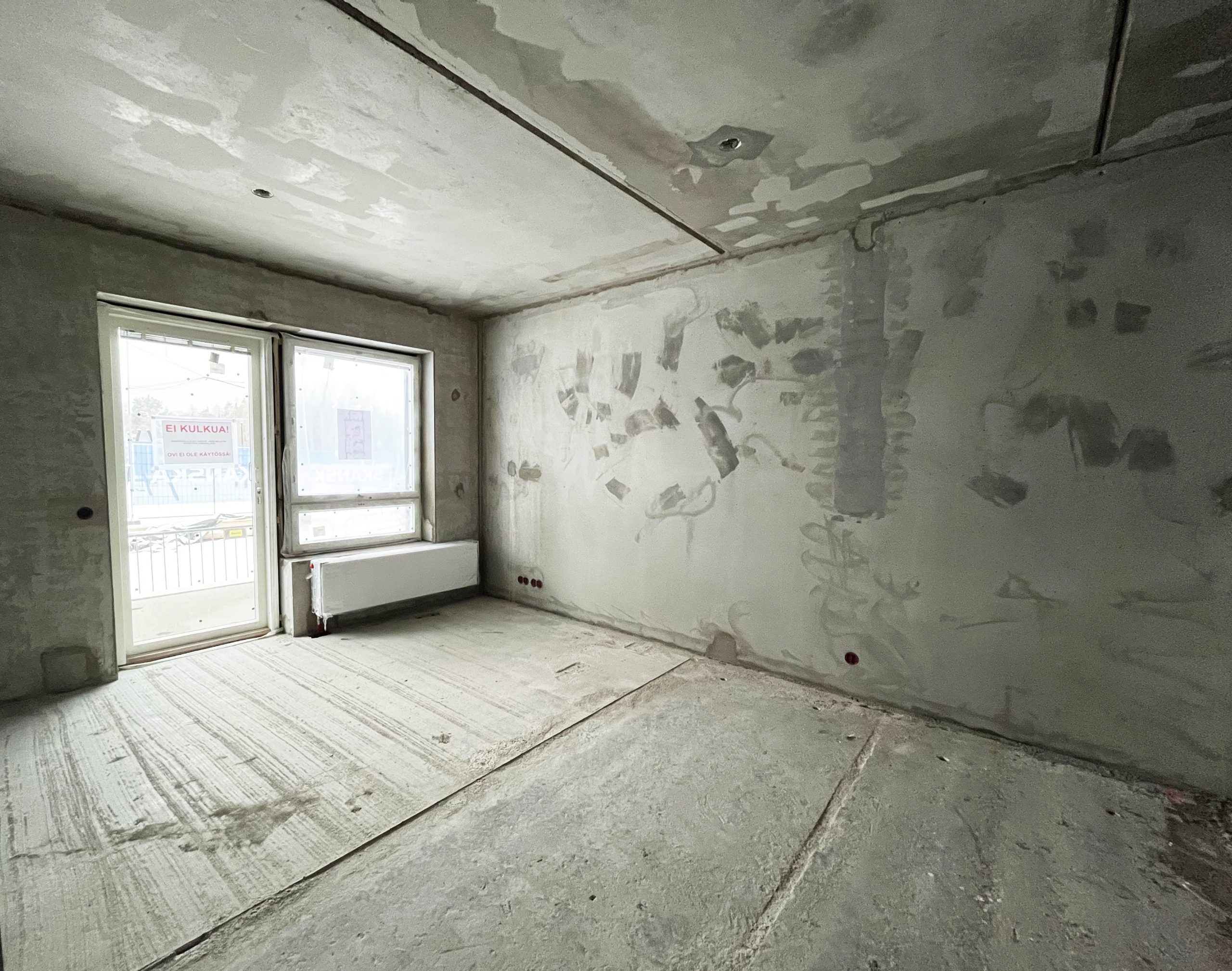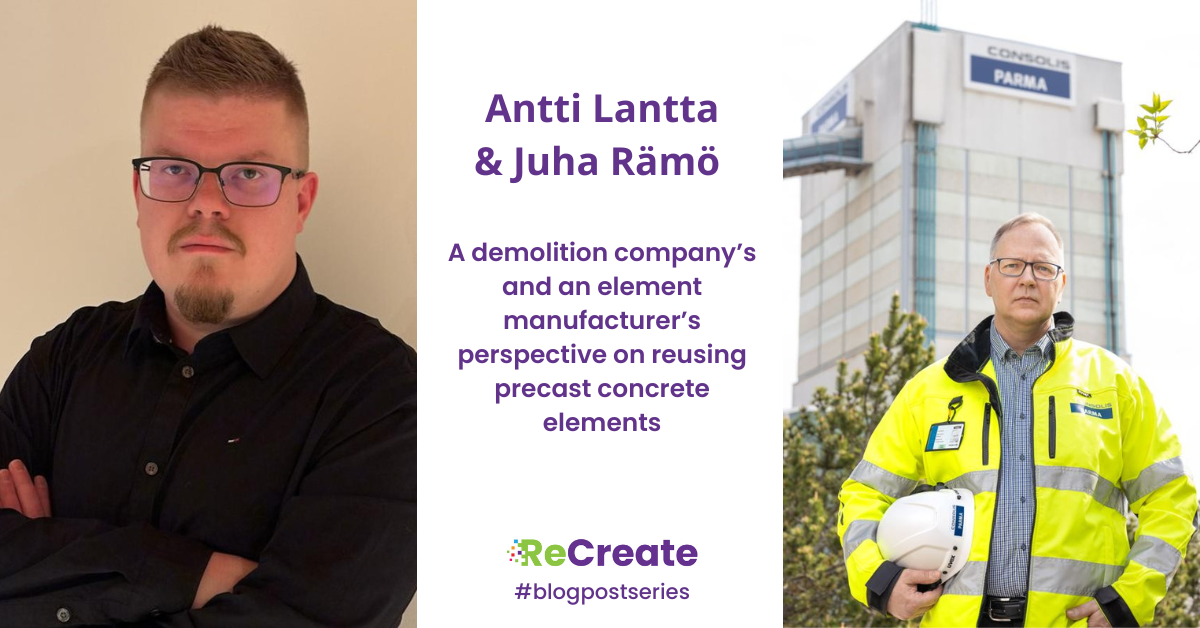Inari Weijo, Competence Lead, Transformation, Ramboll Finland Oy; Antti Lantta, Production Manager, Umacon Oy; Juha Rämö, Technology director, Consolis Parma
In the ReCreate project’s Finnish cluster, the first steps towards commercial projects have been taken. The research project has thus achieved the goal set for it to make the reuse of precast concrete elements possible on market terms. The partnerships formed in the ReCreate project enabled the first commercial reuse of hollow-core slabs in Finland in the spring of 2025.
The first significant factor has been the creation of a reliable and appropriate quality assurance process for the industry. The process developed in the ReCreate project and piloted in practice has removed concern from the industry about whether the reuse of concrete elements is even possible. After that, the doubt has focused more on the economic conditions.
Another significant factor was the publication of the first mini-pilot of the research project in Härmälänranta, Tampere, where 24 hollow-core slabs were reused in the intermediate floor of a residential building. The project was successfully reported, and the message was important to the contractors, as the construction crew felt that the installation was ‘similar to that of new elements’. Uncertainty about delivery times and abnormalities in installation are the things that make contractors concerned. The successful pilot caused strong interest and buzz in the market. Within about a month of the first pilot, ReCreate’s project partner, Consolis Parma, a supplier of precast concrete elements, received an inquiry about reclaimed hollow-core slabs. At the same time, another project partner, Umacon, acting as a demolition contractor, had a new demolition site, from which they identified potential hollow-core slabs for deconstruction and reuse. Umacon asked the cluster partner Ramboll, who acted as a structural engineering expert, for help to survey suitable slabs for deconstruction. Discussion was started in this network to investigate the potential for reuse from economic, technical and scheduling perspectives.
The donor building for the project was the Suutarila community centre in Helsinki. The building had been built in 1981 and was slated for demolition, as a significantly larger school building was built in its place. Ramboll provided expert services for Umacon during the preparation of the deconstruction. Consolis Parma was also monitoring the dismantling process to ensure the quality of process. The progress of the project was agreed on with a low threshold and on a fast schedule among the close-knit networks. In this project, it was decided to detach the hollow-core slabs from the roof structure to avoid the costs of possible screed removal. Ramboll made structural deconstruction design for the site in March 2025. The demolition of the roof structures began in April, and detachment of hollow core slabs started in early May, according to the original schedule.
The hollow-core slabs, a total of 64 pieces, were transported to Consolis Parma’s Nummela factory, where the refurbishment of the elements could begin. At this point, Consolis Parma used Ramboll’s help determine suitable refurbishment measures and to evidence the technical reusability of the hollow-core slabs for building authorities. Based on the tests done in the factory, the hollow-core slabs fulfilled the requirements clearly. The slabs were cleaned, cut to a suitable length, and necessary holes and fittings were made. Also, thermal insulation was added. The refurbishment was completed during May and June. Slabs were installed at the end of June in the Melkinlaituri comprehensive school and daycare centre building under construction in Jätkäsaari neighbourhood, Helsinki.
The commercial project validated how the process for determining reusability in accordance with the ReCreate project works in a real-life project with a tight schedule. The experiences were very encouraging and strengthened the perceptions formed in the research project about the most important steps that should be invested in. These include:
- In addition to technical matters, the pre-deconstruction audit should focus on streamlining the deconstruction work and the operation of the deconstruction site.
- Planning the testing during the process so that sufficient information is obtained already in the pre-deconstruction audit phase. It is essential to know the quality of components in advance so that the investment into deconstruction will not be wasted.
- Logistics and refurbishment in the factory are prepared so that the factory workflow is continuous and resembles manufacturing processes. Planning the logistics of hollow-core slabs and planning their tagging so that information about the origin of the slabs is maintained throughout the process.
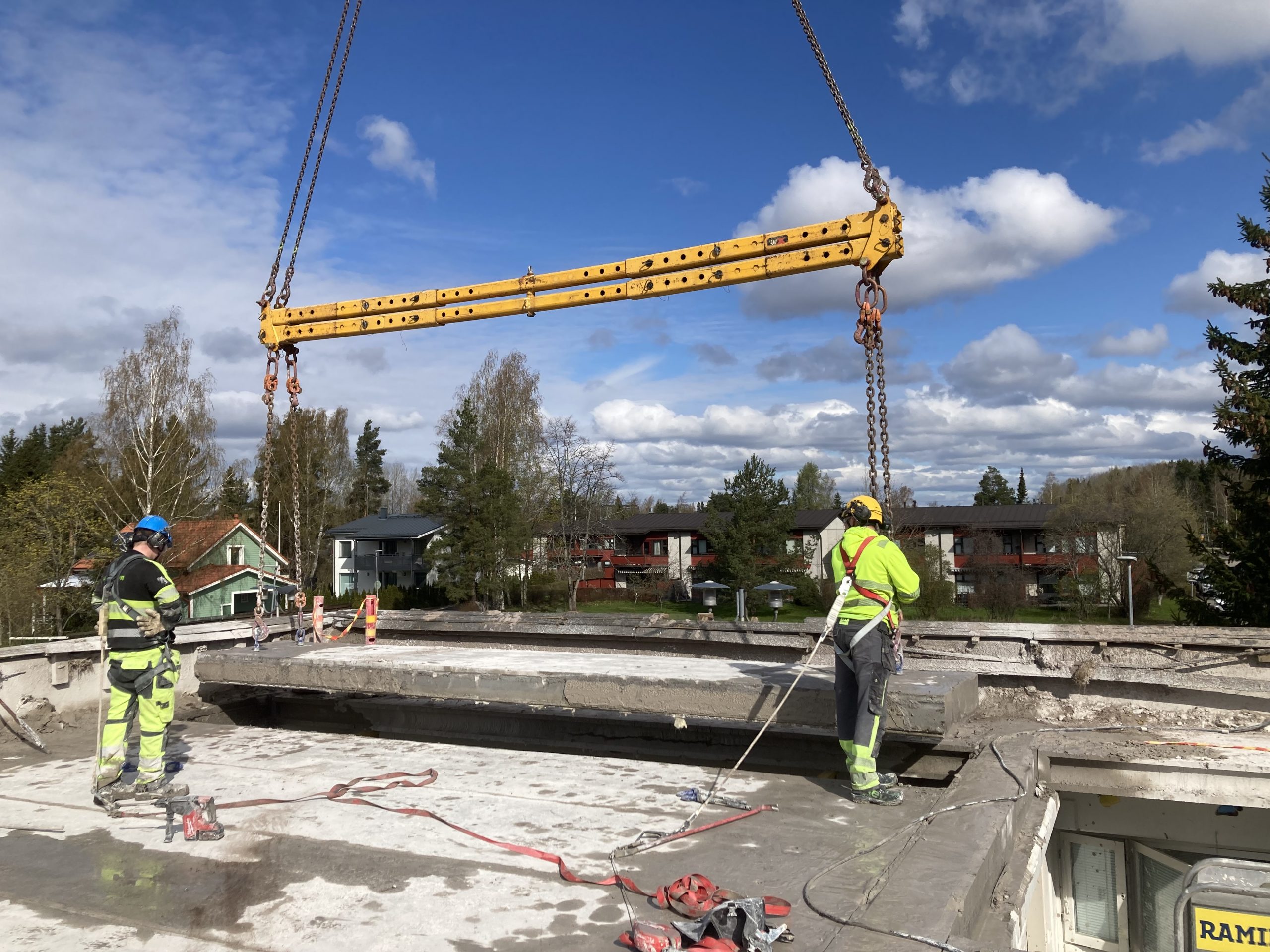
Umacon’s deconstruction workers detaching a hollow-core slab in May. (Photo Inari Weijo, Ramboll Finland Oy)
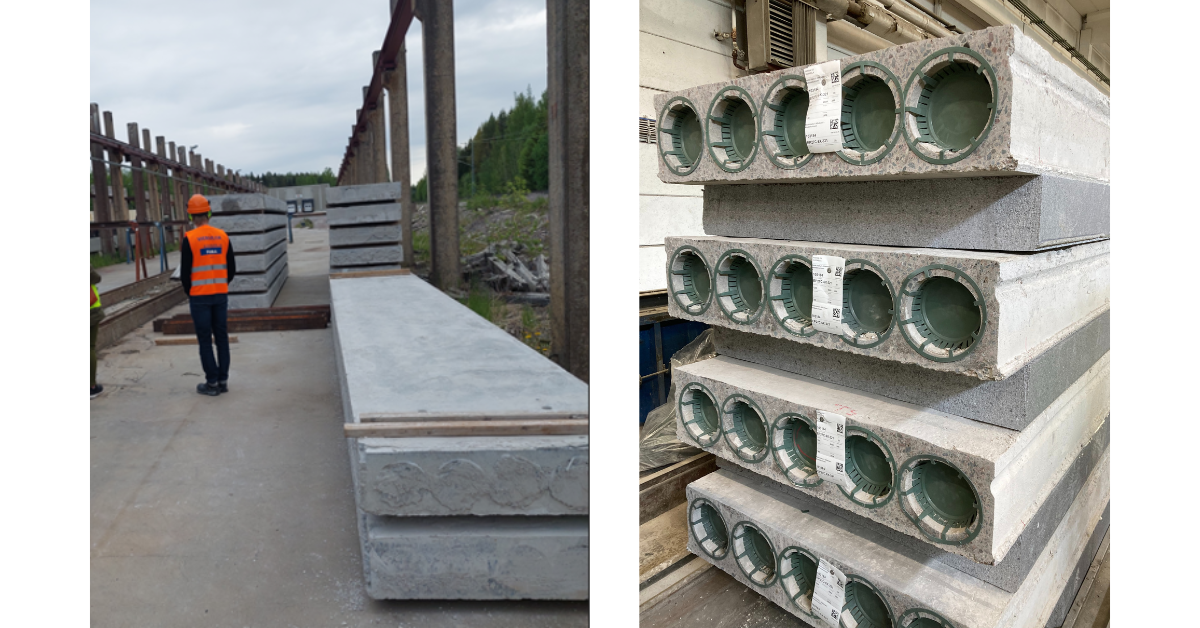
Left: detached hollow-core slabs in the factory (Photo: Juha Rämö, Consolis Parma). Right: refurbished, insulated hollow-core slabs ready to be transported to the new construction site (Photo: Inari Weijo, Ramboll Finland Oy)
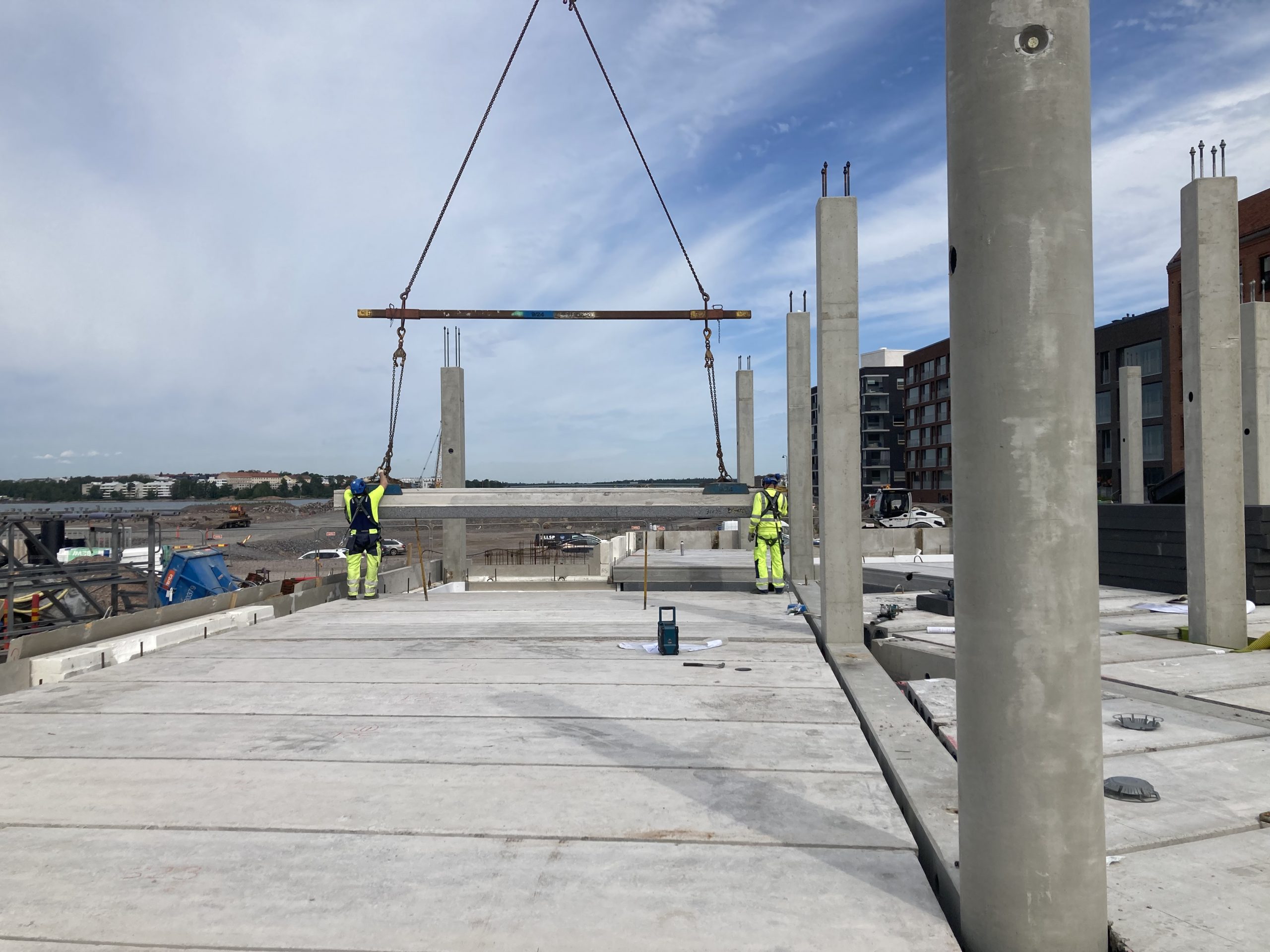
Installation of reused hollow-core slabs in Jätkäsaari, Helsinki. (Photo: Inari Weijo, Ramboll Finland Oy)

